July 15, 2025
Understanding the Role of Eye Contact in Autism
Eye contact is a fundamental aspect of human communication, often serving as a nonverbal indicator of interest and engagement. However, in autism spectrum disorder (ASD), difficulties with eye contact are frequently observed. This article examines whether lack of eye contact is a symptom of autism, the underlying neurobiological mechanisms, early signs, and how behaviors related to eye contact manifest in autistic individuals.
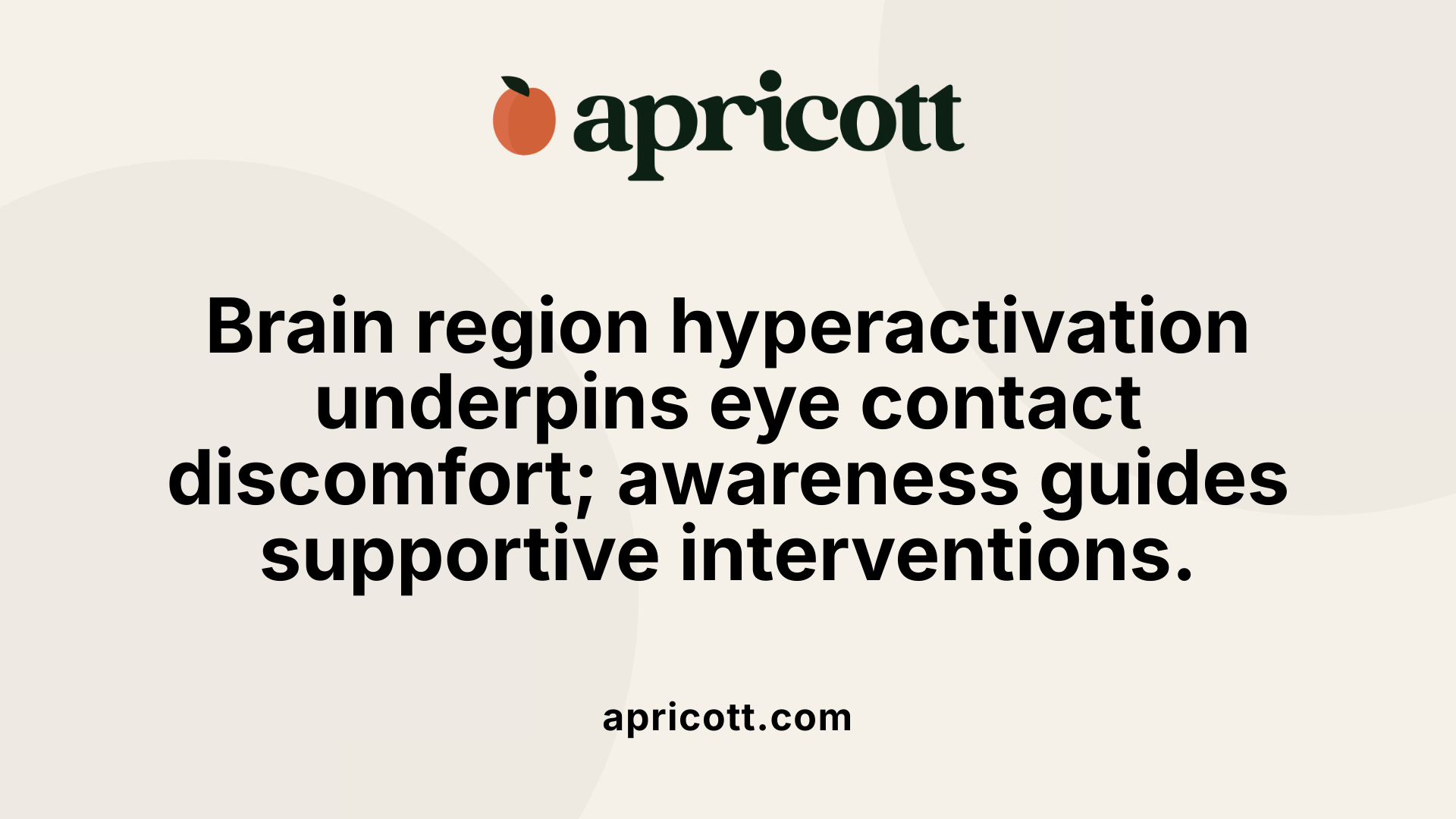
Autistic individuals' challenges with eye contact are closely linked to specific areas in the brain that process social and emotional cues. The amygdala, a structure vital for processing emotions and threat detection, often shows hyperactivity in response to eye contact, especially with faces expressing fear, anger, or neutrality. This overactivation can lead to feelings of anxiety or sensory overload.
Other regions include the dorsal parietal cortex, which is involved in attention and spatial awareness, and has shown reduced activity in autistic people during eye contact tasks. The superior colliculus and pulvinar nucleus, part of the subcortical face processing system, also play crucial roles. These structures are responsible for rapid visual processing and orienting attention toward faces and eyes.
The interaction between these areas influences how individuals perceive and respond to social stimuli, affecting their comfort with maintaining eye contact.
| Brain Region | Function | Relevance to Autism |
|---|---|---|
| Amygdala | Emotion processing, threat detection | Hyperactive responses during eye contact lead to stress and avoidance |
| Dorsal parietal cortex | Attention, spatial awareness | Underactive in autism, contributing to difficulties focusing on social cues |
| Superior colliculus | Visual orienting | Overactivation linked to hyperarousal when exposed to direct gaze |
| Pulvinar nucleus | Visual attention modulation | Involved in initial facial recognition and gaze processing |
Research indicates that during eye contact, autistic individuals display atypical neural responses compared to neurotypical individuals. Neuroimaging studies, including fMRI and EEG, have revealed two main patterns: hyperactivation and hypoactivity in social brain regions.
In many cases, autistic participants show an enlarged N170 response—a measure of early face recognition—and increased P300 amplitude, which is associated with attention and relevance of stimuli. This hyperactivation suggests that eye contact, especially with emotionally charged faces, triggers an overreaction in the brain.
Conversely, when the social context is predictable, responses tend to normalize. Slower N170 responses and reduced amygdala activity in predictable settings imply that anticipation and expectation influence neural reactions.
The degree of neural response varies according to the social features of the face, such as emotional expression. Fearful or ambiguous faces more strongly activate hyper-responsive neural pathways, possibly reflecting threat sensitivity.
Neuroimaging has shed light on the structural and functional differences underpinning eye contact behaviors in autism. Functional Magnetic Resonance Imaging (fMRI) studies have demonstrated that when presented with faces, autistic brains exhibit heightened activity in the amygdala, especially during direct gaze tasks.
These overactivations support the hypothesis that direct eye contact is perceived as threatening or overwhelming, leading to avoidance behaviors. Additionally, EEG studies measuring event-related potentials (N170 and P300) have shown that responses differ depending on whether eye contact is expected or unexpected.
In studies where eye contact was unpredictable, autistic participants experienced increased neural responses, correlating with sensory sensitivities and anxiety levels. Conversely, predictable eye contact elicited more typical responses, suggesting that the brain's prediction and expectation mechanisms significantly influence social perception.
The neural differences in autism affect not only response patterns but also emotional well-being. Excessive activation of the amygdala during eye contact can cause feelings of threat, fear, and sensory overload.
This hyper-responsiveness often results in behaviors like gaze aversion—looking away to reduce arousal. It also contributes to social anxiety, as maintaining eye contact can be taxing and emotionally draining.
Moreover, these neural responses influence how social cues are interpreted. For example, the overactivation in face processing regions may impair reading subtle emotions from the eyes, leading to difficulties in social understanding.
Alternatively, some theories suggest hypoactivity in social circuitry, indicating a reduced interest or reward in social stimuli, which also results in decreased eye contact.
Overall, the complex interplay of neural circuitry shapes the behaviors observed in autism, emphasizing the need for compassionate approaches that account for these neurological differences.
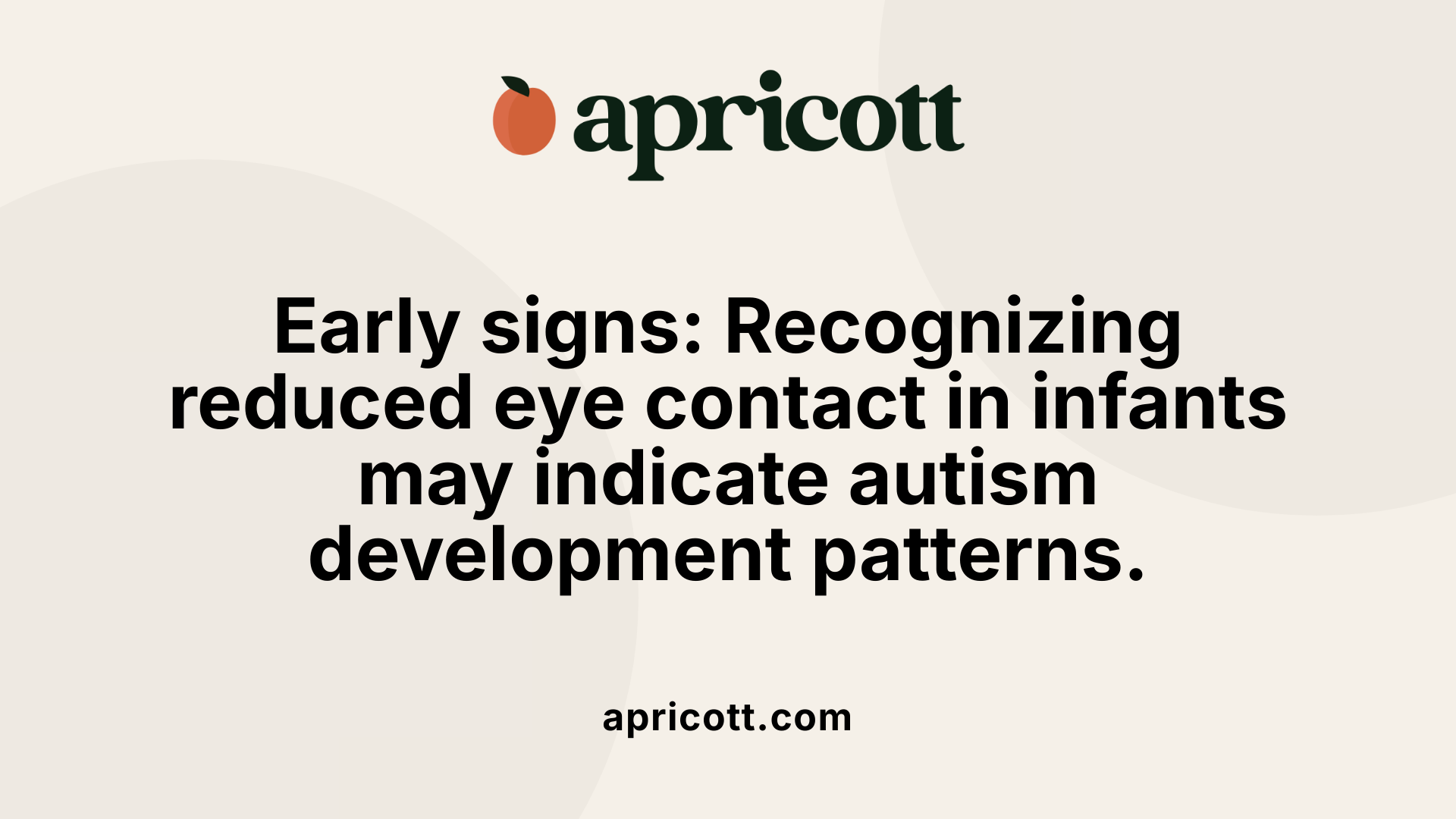
Difficulties with eye contact are among the earliest signs that may suggest a child is on the autism spectrum. These challenges are often noticeable in infants as young as six months old and can be a crucial early indicator for parents and healthcare providers.
Research indicates that infants who later develop autism tend to show less interest in establishing eye contact compared to neurotypical peers. Notably, studies have found that this decline in eye gaze can begin as early as two months of age, with some evidence pointing to a decrease in the interest in social visual cues from around three to six months.
Monitoring early eye contact behaviors provides valuable clues. For example, a typical development pattern involves babies beginning to make sustained eye contact around three months, which helps facilitate social bonding and communication.
However, in children who later receive an autism diagnosis, this pattern can deviate significantly. They may show minimal eye contact even as they grow, along with other social engagement difficulties.
The neural basis of these early behaviors involves regions vital for social processing, such as the dorsal parietal cortex. Reduced activity in these areas correlates with decreased eye contact and social attention.
Severity of autism spectrum disorder can also influence this developmental trajectory. Children with more pronounced neural hypoactivity tend to exhibit greater difficulties in making and maintaining eye contact.
Early signs of reduced eye contact, when observed in conjunction with other developmental markers, can prompt early screening and intervention. Addressing these behaviors early can improve social skills and reduce long-term social difficulties.
In neurotypical development, infants progressively become more adept at engaging in eye contact as part of their social growth.
| Age Range | Typical Eye Contact Behavior | Neural Activity Involved | Implications |
|---|---|---|---|
| 0-3 months | Increasing interest in faces and eye contact | Activation of social brain regions; dorsal parietal cortex engagement | Foundation of social bonding and communication |
| 3-6 months | Sustained eye contact during interactions | Enhanced neural connectivity; anticipation of social cues | Development of joint attention skills |
| 6-12 months | Longer and more intentional eye contact | Maturation of cortical and subcortical social pathways | Facilitates language learning and social understanding |
This normal progression underscores the importance of eye contact in fostering early social and cognitive development. Variations or delays in these patterns may be early warning signs of autism spectrum disorder.
Studies utilizing eye tracking and EEG measurements have provided insights into how early social behaviors relate to later developmental outcomes. Notably, research from 2022 revealed that brain responses in regions such as the dorsal parietal cortex differ in infants and children who are later diagnosed with autism.
For example, when children with autism are exposed to unpredictable social cues, including eye contact, they exhibit altered neural responses—either hypersensitivity or reduced activity. These neural patterns are linked to sensory sensitivities and social anxiety, influencing their eye contact behaviors.
Some studies demonstrate that children with autism show a distinct pattern of neural hyperactivation in response to direct gaze, especially with faces expressing fear or ambiguity. This hyperactivation correlates with behaviors like gaze avoidance, possibly as a coping mechanism to reduce arousal.
In contrast, in less predictable social environments, responses may be blunted, indicating differences in anticipation and social expectation.
This research highlights that early disruptions in neural prediction and processing of social stimuli, including eye contact, contribute to the developmental pathway of autism.
Eye contact behaviors tend to evolve as children grow older and their neural pathways mature. Many children with autism initially show minimal eye contact, which may persist or fluctuate over time.
Some individuals develop strategies to enhance social gaze, such as making fleeting eye contact or focusing on specific facial features to reduce discomfort.
Severity of autism influences these patterns significantly. Those with more severe symptoms often exhibit persistent avoidance, while individuals with milder forms may engage in more frequent or functional eye contact.
Furthermore, the neural mechanisms underlying these behaviors can change, with some research suggesting neural over- or under-activation in social brain regions depending on social context, developmental stage, and individual differences.
Understanding the developmental trajectory of eye contact in autism can inform targeted interventions, emphasizing gradual exposure and accommodation of individual sensory and social needs. This approach can improve social communication skills and overall quality of life.
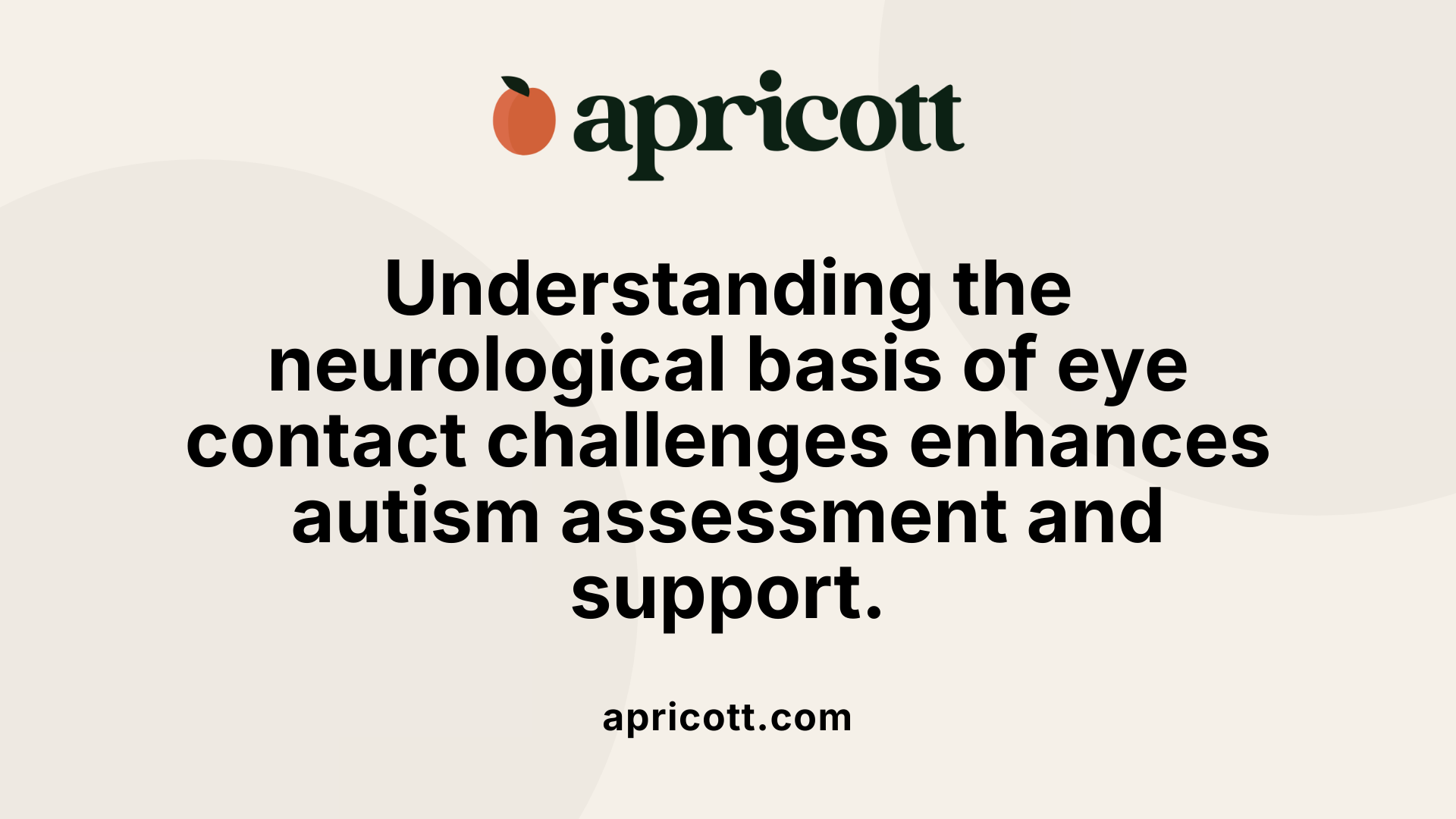
Avoiding eye contact is quite common among individuals with autism spectrum disorder (ASD). It's often misunderstood as a simple sign of disinterest, but research reveals a deeper neurological basis for this behavior. Neuroimaging studies have shown that when autistic individuals look into the eyes of others, their brain regions involved in emotional and social processing—such as the amygdala, superior colliculus, and pulvinar nucleus—become hyperactive.
This overactivation can lead to intense emotional responses like anxiety, discomfort, or sensory overload. Instead of deliberate avoidance, many autistic individuals experience an involuntary distress response triggered by direct gaze.
In essence, difficulty with eye contact in autism stems from neurological differences, not a lack of concern or interest. Recognizing this helps shift perceptions away from blame and towards understanding of underlying brain mechanisms.
Autistic individuals often experience significant challenges with eye contact, finding it either difficult, uncomfortable, or overwhelming. This difficulty is closely linked to neurological differences, especially in brain regions involved in social and emotional processing. Research has shown that in many autistic people, the amygdala—a brain area that processes emotional reactions—tends to be overactive during eye contact. This hyperactivation can trigger feelings of stress, anxiety, and sensory overload.
Despite these challenges, some autistic individuals can learn to make and sustain eye contact with support, practice, and gradual exposure. Strategies such as shaping behaviors with reinforcement, using visual supports, and practicing in natural settings have proven effective. Importantly, forcing eye contact can increase discomfort and anxiety, potentially disrupting social communication rather than enhancing it.
Instead, personalized approaches that respect individual comfort levels are recommended. Techniques like facing the person, using verbal cues, or focusing on less intense parts of the face can be helpful. Overall, with patience, understanding, and tailored methods, many autistic individuals can develop functional eye contact behaviors if they choose to do so.
The characteristics of eye contact among autistic individuals vary widely but often include reduced or limited eye gaze. Many find direct eye contact distressing, citing sensory overload or emotional discomfort as reasons for avoiding it. This tendency can manifest early—some babies and toddlers show little interest in eye contact, which can be an early indicator of autism.
Neuroscientific studies indicate that hyperactivity of the amygdala plays a key role. Excessive activation of this brain region during eye contact may lead to feelings of threat or arousal, prompting avoidance behaviors. Conversely, in some cases, individuals may make intense or prolonged eye contact, often as a masking or camouflaging effort to fit social expectations.
These behaviors reflect underlying differences in social processing, emotional regulation, and sensory sensitivities. Importantly, they are not due to disinterest but are often responses to internal distress or difficulty interpreting social cues. Understanding these variations helps normalize behaviors and promotes more compassionate social interactions.
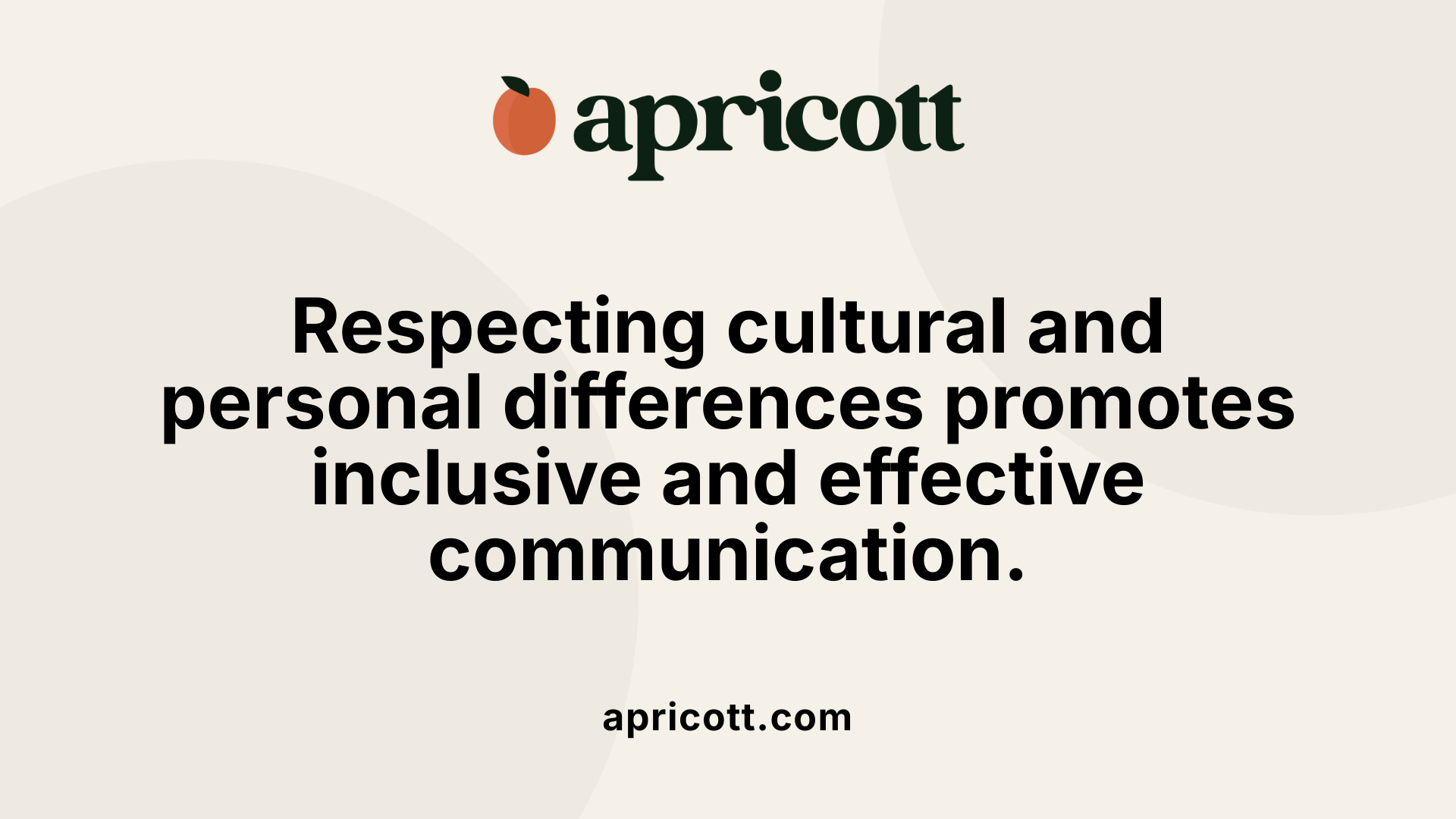
Research consistently shows that difficulties with eye contact are common among individuals with autism spectrum disorder (ASD). Many autistic individuals find making and sustaining eye contact to be uncomfortable, stressful, or even painful. Neuroimaging studies have shed light on the neurological basis of these behaviors. For example, functional MRI scans reveal that during eye contact, there's an overactivation of the subcortical face processing system, which includes the superior colliculus, pulvinar nucleus, and amygdala.
This overactivation is particularly intense when viewing fearful or ambiguous faces, suggesting that the brain perceives direct gaze as a potential threat. This supports the theory of an excitatory/inhibitory imbalance in autism, where increased neural excitation in response to eye contact leads to heightened arousal and avoidance behavior. Many individuals with ASD report feeling as though eye contact is invasive or burning, and some experience sensory overload or heightened anxiety when asked to make eye contact.
The implications of these findings indicate that forcing eye contact can lead to increased discomfort and anxiety. Instead, therapeutic approaches that focus on gradual habituation—allowing individuals to become accustomed to eye contact at their own pace—are more beneficial. These strategies reduce stress and help foster better social engagement over time.
Cultural and societal expectations greatly influence perceptions of eye contact. In many Western societies, making eye contact is considered a sign of interest, attention, and honesty. However, in other cultures, prolonged eye contact can be seen as confrontational or disrespectful, especially toward elders or authority figures.
These cultural differences can affect how eye contact behaviors are interpreted and how individuals on the autism spectrum are perceived. Misunderstanding or neglecting these norms can lead to unfair judgments, such as viewing a lack of eye contact as disinterest or rudeness, which may not be accurate or fair.
Respect for personal comfort and neurodiversity is essential. Many autistic individuals develop their own strategies for communication, such as looking at a person's forehead, chin, or the side of the face, rather than directly into the eyes. Some may make intense or fleeting eye contact, often as part of masking behaviors to fit social expectations.
Understanding that eye contact is not universally necessary for effective communication can reduce pressure and anxiety. Supporting individuals to find their own comfortable ways of engaging socially fosters inclusion and respects personal preferences.
There are many ways to communicate nonverbally that do not rely on direct eye contact. Visual supports, such as gestures, facial expressions, or written cues, can facilitate understanding.
Using technology—like video calls with adjustable settings—can also help individuals engage at their comfort level. For example, some autistic people prefer to look at a screen rather than make real-time eye contact.
In addition, incorporating body language, such as nodding or using hand signals, can effectively indicate interest and attention without the stress of direct gaze. These methods respect individual differences while maintaining social engagement.
Therapies tailored to individual needs prioritize comfort and personal goals. Instead of enforcing eye contact, practitioners often employ gradual exposure techniques, allowing clients to build tolerance at their own pace. This approach reduces the risk of increasing anxiety or sensory overload.
Behavioral therapies like Applied Behavior Analysis (ABA) may incorporate strategies such as reinforcing relaxed eye contact or alternative communication methods, focusing on functional social skills rather than strict conformity.
A person-centered approach considers the individual's social preferences, sensory sensitivities, and communication styles, aiming to support meaningful interactions that do not cause distress.
| Aspect | Influence | Approach | Additional Notes |
|---|---|---|---|
| Cultural Norms | Vary across societies, affecting perceptions and behaviors | Respect cultural context when interpreting eye contact | Awareness fosters understanding and reduces misjudgments |
| Individual Preferences | Autistic individuals may develop unique communication styles | Support self-chosen methods like gestures or looking away | Promotes comfort and effective communication |
| Alternatives | Use of visual supports and technology | Incorporate gestures, written cues, or video tools | Enhances engagement without stress |
| Therapeutic Strategies | Focus on comfort and personal goals | Gradual habituation, reinforce relaxed behaviors | Avoid forcing eye contact to reduce anxiety |
Understanding the complex factors surrounding eye contact helps create more inclusive and supportive environments. Recognizing individual differences and respecting cultural norms are essential steps toward better social integration and well-being for everyone.
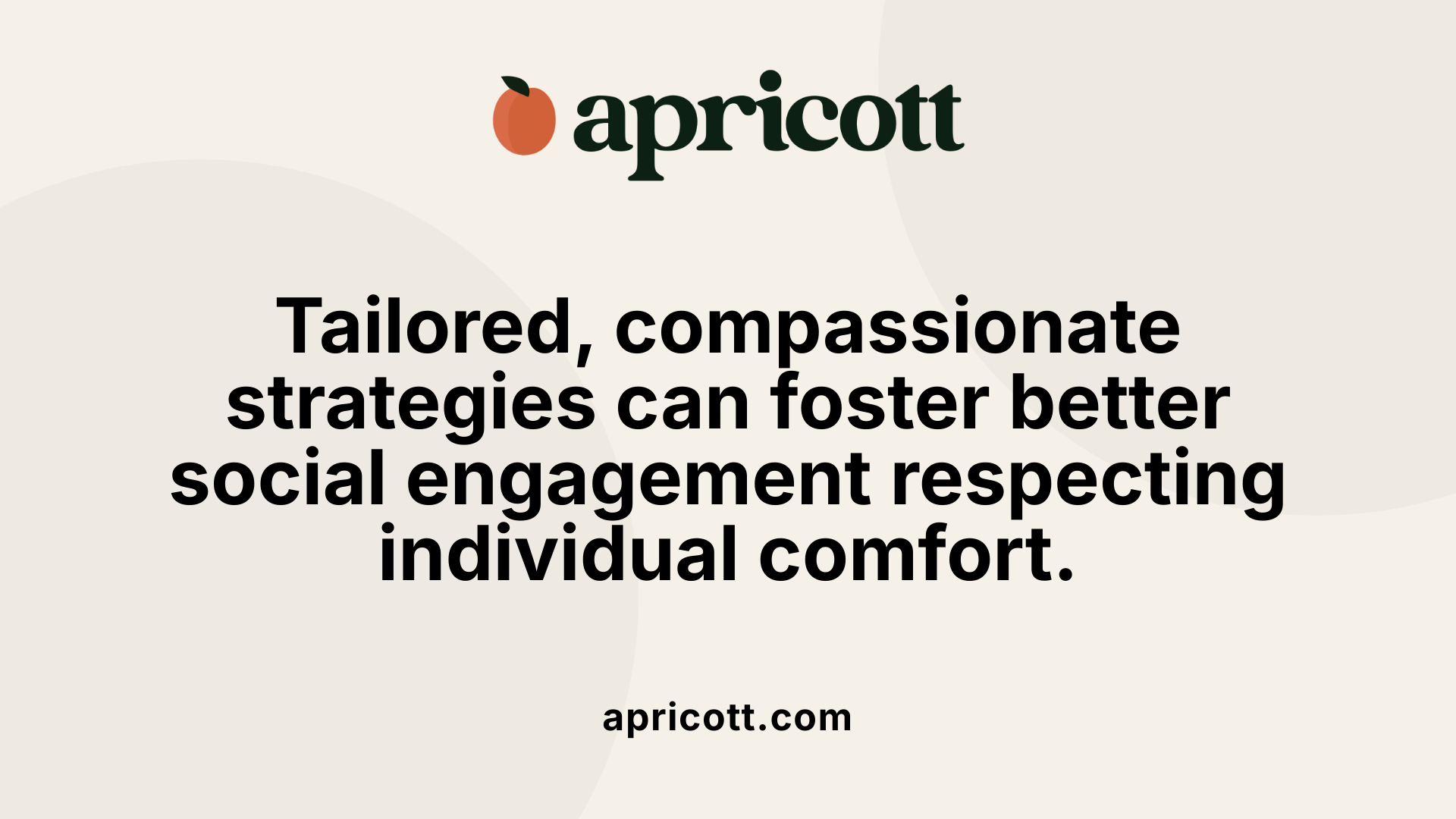
Autistic individuals often experience significant challenges with making and maintaining eye contact. This difficulty arises from neurological differences in brain regions dedicated to social processing, making eye contact often uncomfortable or even distressing. Some autistic people avoid eye contact altogether, while others may be able to make eye contact with support, practice, or in certain contexts. Efforts to improve eye contact should be tailored to each individual, employing gradual teaching techniques such as shaping, reinforcement, and visual supports. These approaches are most effective when applied in low-pressure, naturalistic settings to prevent overwhelm. Importantly, forcing eye contact can increase anxiety and hinder social interaction. Alternative strategies—like facing the individual, nodding, or verbal acknowledgment—can indicate attention without the discomfort of direct eye contact. Recognizing individual preferences and patience are crucial for encouraging comfortable and functional eye contact, whether or not the individual chooses to adopt it for social purposes.
Common features of eye contact in autism include decreased frequency or avoidance of direct eye gaze, often rooted in sensory sensitivities and social cognition differences. Many autistic people find direct eye contact overwhelming or threatening, which triggers avoidance behaviors as a way to regulate arousal levels. Neuroscience research highlights that hyperactivity in the amygdala—a brain region involved in processing emotional responses—contributes to heightened arousal and negative feelings during eye contact. This neural overactivation may cause feelings of anxiety, pain, or threat when engaging with others’ eyes. Some individuals may display intense, somewhat unnatural eye contact, which can relate to masking or social camouflaging behaviors. These variations in eye contact behaviors reflect underlying sensory processing differences and emotional regulation challenges. Overall, these traits influence how autistic individuals navigate social interactions, making eye contact a complex and sometimes burdensome behavior rather than a straightforward social cue.
Effective approaches to supporting eye contact in autism emphasize respecting each person’s unique experiences and comfort levels. Recognizing that the spectrum encompasses a wide range of behaviors, interventions should focus on personal goals and preferences rather than societal norms alone. Customizable methods include using visual supports, practicing in familiar environments, and integrating interests to make the process more engaging. Supportive caregivers or therapists should prioritize setting a nonjudgmental, patient atmosphere that validates individual sensory and emotional needs.
Gradual exposure involves slowly increasing comfort with eye contact through step-by-step approaches. Techniques may include first establishing comfort with looking at less overwhelming parts of a face, such as the forehead or chin, and then gradually progressing to brief eye contact. Reinforcing positive experiences and providing frequent breaks help prevent overstimulation and build confidence. Over time, this habituation process can reduce anxiety associated with eye contact, particularly when aligned with the individual's readiness and comfort.
The social motivation model suggests that autistic individuals may find social stimuli less rewarding, affecting their motivation to make eye contact. Enhancing the perceived value of social cues through positive reinforcement can promote engagement. Reward systems such as praise, preferred activities, or tangible incentives can be integrated during social interactions to increase motivation for eye contact. This approach is most effective when tailored to individual interests and combined with an understanding of sensory and emotional factors.
Fundamental to improving social integration is fostering understanding and acceptance of different eye contact behaviors. Educating peers, teachers, and employers about the neurodiversity spectrum helps dispel misconceptions that reduced eye contact indicates disinterest or rudeness. Accepting diverse communication styles enables autistic individuals to participate more fully in social and professional contexts without the pressure to conform to neurotypical expectations. By emphasizing comfort, choice, and individual strengths, communities can create more inclusive environments where all forms of social engagement are valued.
| Aspect | Description | Supporting Details |
|---|---|---|
| Typical Characteristics | Reduced or avoided eye contact, sensory overload | Overactivation of amygdala, sensory sensitivities |
| Improvement Strategies | Gradual exposure, visual supports, personalized approaches | Shaping, reinforcement, patience |
| Neural Mechanisms | Hyperactivity in social brain regions, differential responses | Overactivation linked to anxiety, threat perception |
| Role of Social Motivation | Rewards increase interest, promote engagement | Use of positive reinforcement tailored to preferences |
| Cultural and Social Norms | Varying perceptions of eye contact necessity | Education and acceptance foster inclusion |
| Early Indicators | Less interest from infancy, early signs | Developmental differences observable from 6 months |
| Therapy Approaches | Nonforcing, gradual habituation | Focus on personal comfort and functional behaviors |
| Impact of Neural Activity | Context-dependent responses, hypersensitivity | Variability based on social cues and predictability |
Understanding the complexities of eye contact in autism promotes a compassionate and individualized approach to social interaction, emphasizing support over correction and recognizing diverse communication styles.
Research consistently shows that many individuals with autism spectrum disorder (ASD) struggle with making and maintaining eye contact. This difficulty is not due to disinterest but stems from neurological and sensory factors that make eye contact uncomfortable or even distressing.
Neuroimaging studies provide insight into the brain mechanisms involved. They reveal that during eye contact, overactivation occurs in the subcortical face processing system, which includes regions like the superior colliculus, the pulvinar nucleus of the thalamus, and the amygdala. These areas are involved in processing social and emotional cues, and their heightened activity indicates increased neural sensitivity and arousal.
This overactivation, supported by the excitatory/inhibitory imbalance hypothesis, suggests that the autistic brain perceives direct gaze as a threat or source of discomfort, resulting in avoidance behaviors. Many autistic individuals describe eye contact as burning, invasive, or overwhelming, which can trigger feelings of anxiety or sensory overload.
Instead of being a sign of disinterest, difficulty with eye contact in autism is often linked with sensory overload, social anxiety, and challenges in social cognition. For this reason, forcing eye contact can exacerbate stress, leading to less effective social engagement. Therapeutic strategies that promote gradual habituation—such as slowly increasing eye contact in comfortable contexts—are more effective and less distressing.
Understanding these underlying neural and psychological factors emphasizes the importance of compassionate, individualized approaches rather than rigid expectations. Recognizing that many autistic people find eye contact aversive helps foster patience and acceptance.
Supporting autistic individuals in navigating eye contact requires sensitivity and flexibility. Instead of insisting on typical levels of eye contact, caregivers and educators should focus on creating supportive environments that respect personal comfort levels.
Strategies may include:
Such approaches promote trust and reduce the chance of creating additional social anxiety. They value each person's unique experiences and preferences, helping foster confidence and social skills over time.
Widespread misconceptions about eye contact can hinder social acceptance of autistic individuals. Society needs to move toward greater understanding that avoiding or differing in eye contact is a normative variation, not a sign of disrespect or disinterest.
Educational campaigns and awareness programs can dispel myths by emphasizing the neurological basis of eye contact challenges. Highlighting stories from autistic individuals about their experiences fosters empathy and respect.
In professional and social contexts, adapting communication norms—such as reducing pressure to make eye contact—can create more inclusive environments. Recognizing alternative ways of expressing attention, like nodding or verbal affirmations, affirms individual differences.
Creating inclusive communities involves understanding that social interaction varies greatly. Acceptance involves respecting these differences, providing support tailored to each individual, and valuing diverse communication styles.
| Aspect | What It Means | Application Tips |
|---|---|---|
| Neural Basis | Overactivation in face processing systems during eye contact | Educate about brain differences to foster understanding |
| Behavioral Strategies | Gradual exposure, alternative cues | Use patience and personalize approaches |
| Societal Norms | Variability and acceptance | Promote awareness and inclusive policies |
| Emotional Impact | Anxiety, sensory overload | Create supportive environments and reduce pressure |
Through understanding and compassionate support, society can better accommodate the needs of autistic individuals, helping them engage with social interactions in ways that are comfortable and authentic for them.
Understanding the neurobiological and behavioral nuances of eye contact in autism is crucial for fostering empathy and developing effective, respectful strategies. Recognizing that avoidance of eye contact often stems from neurological sensitivities rather than disinterest can help reduce stigma. Supporting autistic individuals with personalized approaches and promoting societal acceptance are key to enhancing social participation and well-being.